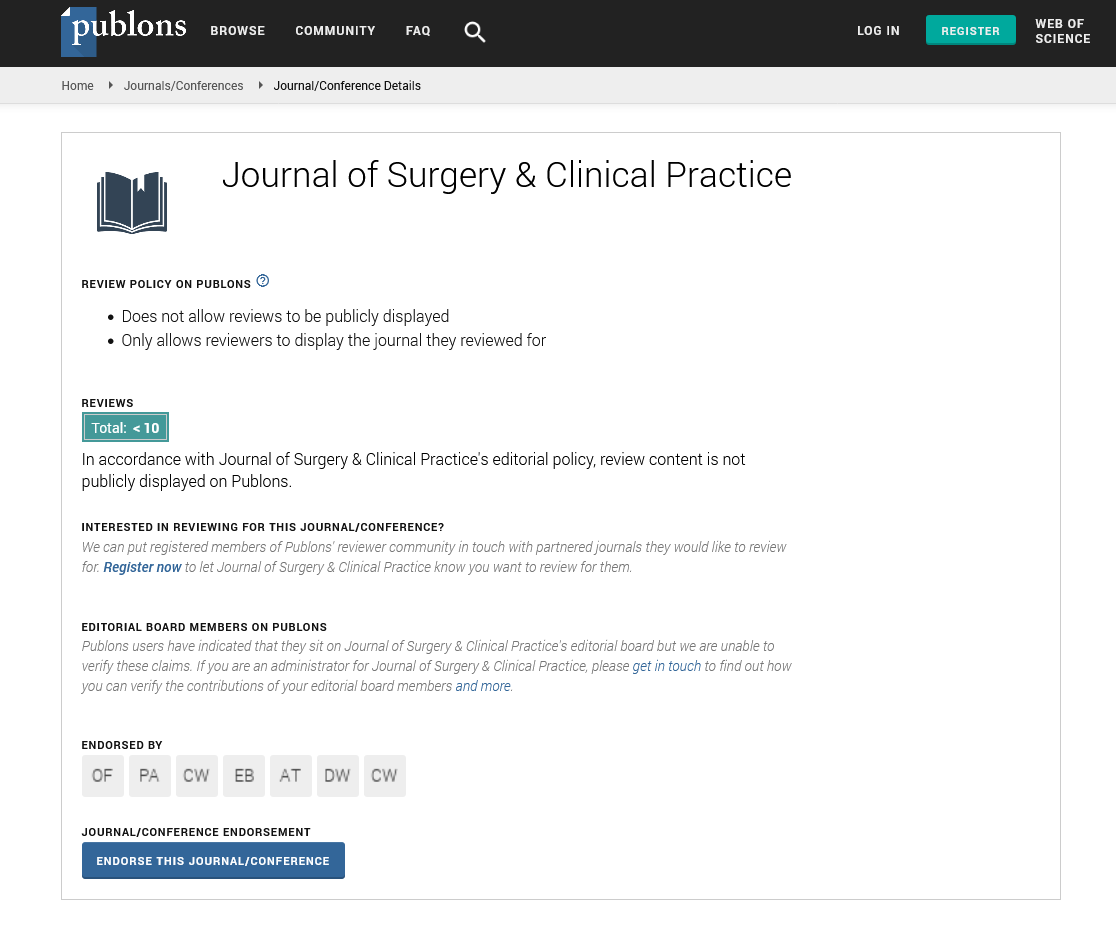Commentary, J Surg Clin Prac Vol: 7 Issue: 3
Surgical Challenges and Ensuring Patient Recovery in Neck Trauma Management
Yung Lee*
1Department of Surgery, McMaster University, Ontario, Canada
*Corresponding Author: Yung Lee,
Department of Surgery, McMaster University,
Ontario, Canada
E-mail: lee@3452218.ca
Received date: 24 August, 2023, Manuscript No. JSCP-23-117725;
Editor assigned date: 28 August, 2023, PreQC No. JSCP-23-117725 (PQ);
Reviewed date: 12 September, 2023, QC No. JSCP-23-117725;
Revised date date: 19 September, 2023, Manuscript No. JSCP-23-117725 (R);
Published date: 26 September, 2023 DOI: 10.35248/JSCP.23.7.100389
Citation: Lee Y (2023) Surgical Challenges and Ensuring Patient Recovery in Neck Trauma Management. J Surg Clin Prac 7:3.
Description
Neck trauma, whether due to accidents, falls, or other incidents, presents a complex and potentially life-threatening situation. The neck houses vital structures such as the airway, blood vessels, and the spinal cord, making any injury in this area critical. Surgical management of neck trauma has precise intervention to ensure the preservation of life and the restoration of function. When a patient with neck trauma arrives in the emergency room, the initial focus is on rapid assessment and stabilization. Airway management is paramount to prevent obstruction and ensure oxygenation. Cervical spine immobilization is crucial to prevent further damage, and any signs of significant bleeding or compromised blood circulation require immediate attention. During this critical phase, collaboration between trauma surgeons, anesthesiologists, and emergency physicians is essential to make swift decisions that can be life-saving.
Once the patient is stabilized, a thorough evaluation is necessary to assess the extent of the neck trauma. Advanced diagnostic tools such as CT (Computerized Tomography), MRI (Magnetic Resonance Imaging), and angiography provide detailed images, enabling surgeons to identify the exact location and nature of the injury. This diagnostic precision is important in planning the surgical approach and minimizing risks during the intervention. In cases of penetrating trauma or severe injuries where the extent of damage is unclear, exploratory surgery is often necessary. Surgeons meticulously inspect the affected area, vascular injuries and nerve damage. Timely surgical exploration can prevent further complications and improve patient outcomes.
Neck trauma frequently involves damage to major blood vessels, leading to life-threatening hemorrhage. Vascular surgeons employ intricate techniques such as microvascular repair and endovascular interventions to repair damaged vessels, ensuring the restoration of normal blood flow. The delicate nature of these procedures demands both expertise and precision. Trauma affecting the airway, including the larynx or trachea, can lead to breathing difficulties. Surgeons may need to perform airway reconstruction procedures, such as tracheostomy or laryngotracheal reconstruction, to restore normal breathing. Close post-operative monitoring and respiratory therapy are essential in ensuring optimal recovery.
The neck house is a complex network of structures, making surgical navigation challenging. Surgeons must have a deep understanding of the anatomy to avoid inadvertent damage to vital structures during interventions. Neck surgery carries inherent risks, including infection, bleeding, and damage to nearby nerves or blood vessels. Surgeons must balance the need for intervention with the potential complications, employing meticulous techniques to minimize risks. Neck trauma often results in functional impairments, necessitating extensive rehabilitation and long-term care. Physical therapy, speech therapy, and psychological support are integral components of the recovery process, requiring a multidisciplinary approach.
The surgical management of neck trauma does not end in the operating room. A holistic approach to patient recovery is imperative. Post-operative care, including wound management, pain control, and psychological support, plays an important role in the healing process. Rehabilitation programs tailored to individual needs help patients regain mobility, strength, and function, ensuring a higher quality of life post-trauma. The challenges in neck trauma surgery can treat with innovative techniques and a multidisciplinary approach; ensuring patients receive comprehensive care from the moment of injury through the recovery process. By physical, psychological and social aspects the medical community can offer patients the best chance for a meaningful and fulfilling life after neck trauma.
 Spanish
Spanish  Chinese
Chinese  Russian
Russian  German
German  French
French  Japanese
Japanese  Portuguese
Portuguese  Hindi
Hindi 
